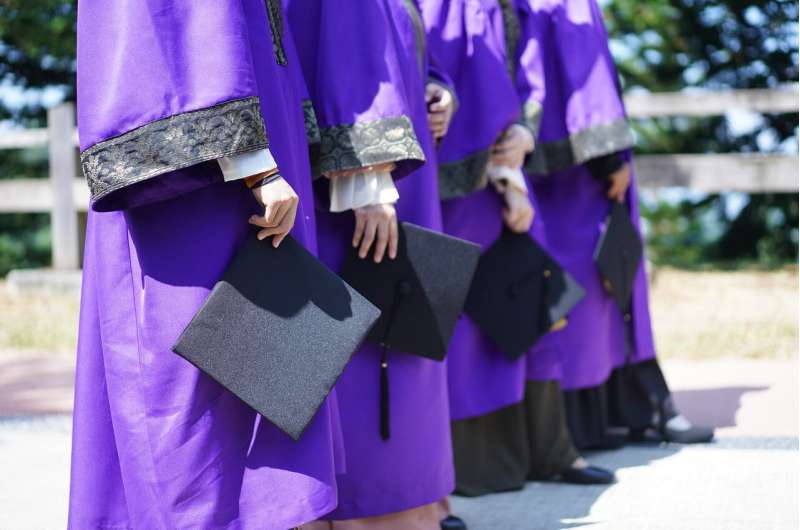Program successful in increasing private donations to public universities, study shows

A new study suggests that the Texas Research Incentive Program (TRIP) has succeeded in boosting the amount of private donations to public universities, indicating that policymakers can effectively leverage public investment to spur private donations.
The authors of the analysis, published in the American Educational Research Journal, note that further questions warrant study—such as whether the TRIP model increases institutional inequity over time.
Under the 2009 law that created TRIP, seven public "emerging research universities" were made eligible to receive matching funds from the state for gifts or endowment donations received from private sources: the University of Houston, University of North Texas, Texas Tech University and four of the University of Texas branch campuses. Texas State University was added to that list in 2013. TRIP-eligible colleges were selected based on a set of metrics such as the number of doctoral degrees awarded and faculty quality.
Researchers used data collected from 2006 to 2017 from the government's Integrated Postsecondary Education Data System, state-level data from the Census Bureau and the Texas Higher Education Coordinating Board to determine TRIP's effect on the eligible universities. The universities that adopted TRIP saw a 37.2 percent annual increase ($6.7 million more per year) in private gifts made by donors when compared to the amount similar non-TRIP institutions received. State funding for grants and contracts, which includes matching money for these gifts, also increased by $14 million among TRIP-eligible universities.
The program did not lead to a significant increase in long-term endowment assets, which indicates the donations are likely used for short-term funding.
"Our study provides new evidence that increased government support could stimulate monetary donations and help build universities' research capacity," said Denisa Gándara, co-author and assistant professor in SMU's Department of Education Policy and Leadership in the Simmons School of Education and Human Development. "Government support appears to signal two things to potential donors: one, that their dollar will be worth more given the matching funds and two, that their research for the eligible institutions is a valuable one."
The research team, which included Frank Fernandez at the University of Mississippi, stopped short of saying whether other states should adopt a similar program as Texas to boost research in public universities.
"One perspective is that TRIP is reducing inequality between the emerging research universities and two of the largest public universities for research in Texas—University of Texas at Austin and Texas A&M University," said lead author Xiaodan Hu, assistant professor in higher education at Northern Illinois University. "Another perspective is that the ascendance of emerging research universities could allow other public institutions in Texas, including minority-serving institutions, to fall further behind in terms of public funding and research capacity."
Finding the balance between efficiency and equity is therefore important to consider when adopting a research incentive policy statewide, Hu said.
Researchers were not able to isolate the amount of private donations specifically earmarked for research due to data limitations. They did, however, take multiple steps to ensure their findings were the result of TRIP and not some other reason. One of those measures was accounting for institution-specific trends that occurred before and after the program took effect in 2009 to ensure those trends were not a factor in their results.
The researchers also compared several non-TRIP colleges around the country to the eight universities that were studied.
More information: Xiaodan Hu et al, Are Donations Bigger in Texas? Analyzing the Impact of a Policy to Match Donations to Texas' Emerging Research Universities, American Educational Research Journal (2020). DOI: 10.3102/0002831220968947
Journal information: American Educational Research Journal
Provided by Southern Methodist University




















